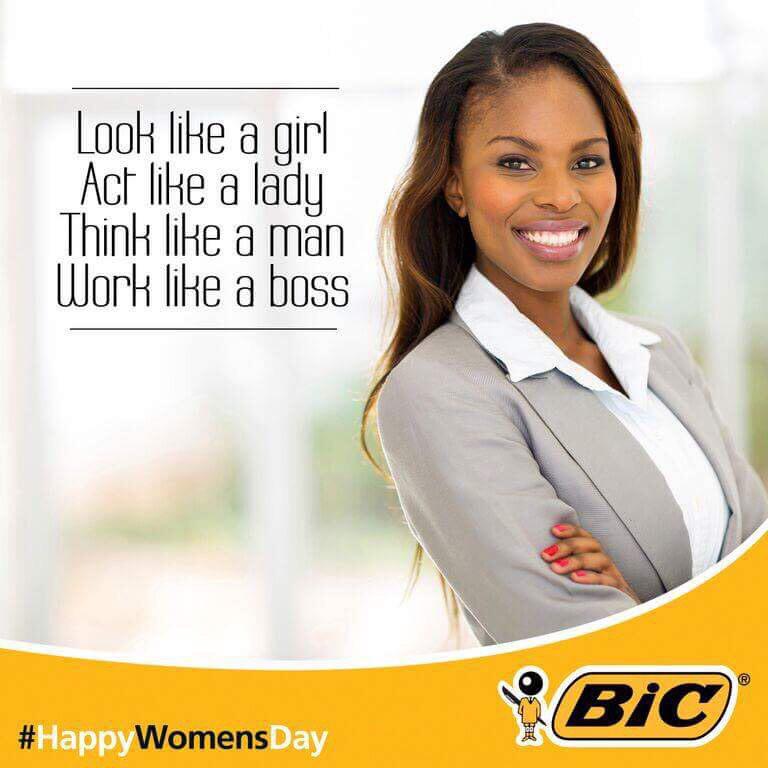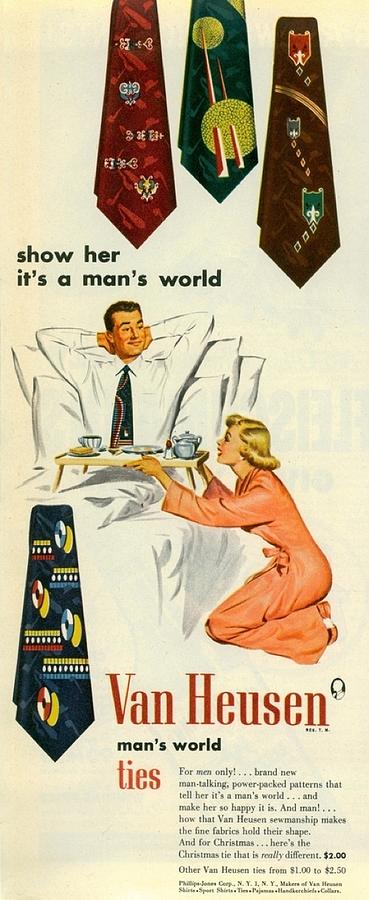Advertising employs coercion, psychology, and generalization to make money off consumers’ hopes, dreams, and insecurities. While ads are seen as supplementary to content, they are just as powerful in terms of disseminating social views, values, and vitriolic stereotypes. As the United States is a patriarchy, women have typically been treated as second-class citizens, especially in ads. In Sex, Lies, and Advertising, Gloria summed up the problem with the question, ‘what would future archaeologists think of women’s magazines?’ They would think women were brainless, powerless consumers, and understandably so.
In Steinem’s Ms. magazine, it was practically impossible to get ads that didn’t perpetuate stereotypes about women. They struggled to get ads for electronics, cars, and beer, but the idea was that men were making the purchasing decisions, so it didn’t make sense to put these ads in a women’s magazine. The ads of the time that were targeted to women were problematic, as it was assumed that all women cared about was their appearance. Housekeeping was also the be all, end all of womanhood, as “even in medical journals, tranquilizer ads showed depressed housewives standing beside piles of dirty dishes and promised to get them back to work.” (2)
 |
While this is a parody, the general gist
is that housework was a gift |
 |
Mornidine was medication for morning sickness so
housewives could get better and cook for their husband |
Vintage ads perpetuated the dominance of the white heterosexual male in that they were juxtaposed by their subservient wives. This trend is demeaning to the wives, and an artist recently
highlighted the degradation by reimagining the sexist ads with men representing the lower class. but was a blatant erasure of women of color as well as queer women. In
Commodity Lesbianism, Danae Clark discusses the fact that lesbians were not targeted as a separate consumer group due to fears that explicit appeal to homosexuality would cause heterosexuals to lose interest. While there have been moves to make advertising more inclusive, heteronormative ideals, and white heteronormative at that, are still more heavily supported and peddled.
Thus, as the years have passed, advertising has continued to be problematic. There have been campaigns with strong messages, like Nike’s Colin Kaepernick ad, but it cannot be forgotten that ads exploit social moods to make a profit. They may have a good message, but there is often much more to be said beyond the written words. One stark example of this comes with ‘body positive’ campaigns such as Aerie #Real. While on the surface, body positivity is a triumph of supporting women beyond a size two, its, by one account, actual
“horse shit.” There is nothing inherently brave about having rolls, and while the campaigns increase representation, at the end of the day it is still commodifying the feminine form and making money off the insecurities the industry itself has inspired. What is worse is when brands hop on this inclusive wave, and yet
don’t actually make inclusive clothing. Further, for all the bodily diversity, there are rarely
women with disabilities included (though Aerie has recently made an effort to do so
here), nor are there typically people outside of the gender binary.
Whitewashing is perhaps even more prevalent, as it is so ingrained in the culture. Around the world, there are ads for skin-whitening products, as white has become symbolic of power. In the wake of wokeness, one would think companies would be at least try to hide their racist tendencies, but alas, there is the infamous
Dove ad. In 2017, Dove had an ad where a black woman became white after using their product, which was a direct anti-blackness message. This ad is nothing new, however, as the same imagery is featured in this 1940 ad for another soap company.
 |
| Cleaning away the blackness is not a new trope |
 |
The infamous whitewashing, along with reference to another
company's misgivings |
Jean Kilbourne’s argument in Beauty and the Beast of Advertising can be viewed through the lenses of both race and gender. According to Kilbourne, there are five key methods used in advertising that work to maintain typical dominance, these being superiority (through size, attention, and positioning, i.e. making the white man larger), dismemberment (treating a woman’s body as an impersonal collection of objects), clowning (portraying women as silly/childish), canting (bending the body to show insecurity), and dominance/violence (123). Women, and specifically women of color, are treated as less than through these means.
Both past, current, and future ads reinforce power structures in society because familiar content sells. But advertising is not just important because of its content, but also because of how the ads are delivered. As such, ads are present in every element of my media consumption, albeit in different ways. In the television I watch, ads are very conspicuous, as commercial breaks have been written into the format. While it is expensive to advertise on TV, it still dominates because of history: TV was implemented to increase consumerism. The ads are not tailored to individuals, but they are tailored by time of day and channel based on generalizations of the type of people who are watching a certain
program.
The ads in news sites are also quite conspicuous. With AP News, the ads are small banners that one can click through. Some are random, like links to tabloid stories or Progressive Insurance, but I also get ads related to things I have recently researched, like the New York Hall of Science, seen below:
 |
| The ad for nysci popped up less than an hour after my search |
With printed books, the ad experience is less interactive, but its still there. Often, there is a page with the author’s other titles as well as recommendations for other books from the same publisher. Subway ads likewise do not change, and the only real choice the consumer has is choosing a different train car/train line. That said, some subway ads have been stepping it up lately. Casper Mattresses has been using whimsical, humorous
illustrations to get people to buy mattresses online, and while I have no need for a mattress, the ads are great to look at, and lead me to like the company with no other information. Seamless has been pulling New Yorkers into its ads, giving neighborhoods certain
awards based on aggregate order trends in the area. While there is technically no user input, I have found myself to be on the lookout for an award referencing my neighborhood.
 |
| The ad is whimsical, creating a positive association |
 |
| Seamless on the Subway |
With the advent of streaming and social media, ads have changed. On Hulu, there is the option to
tailor personal ad settings, and there is also often a “choose your ad experience” at the start of an episode, in which you can choose one of two ads for the same credit card company, such as one talking about late checkout and the other discussing going back to school. On Netflix, there are no ads on the surface, but of course this isn’t true. Like Spotify, there is recommended media based on consumption habits, but the stronger ads come in the content itself. In the show “Queer Eye,” the fab five glorify
consumerism, as they buy the subjects new clothes, a hair cut, new furniture et cetera. There are also many happy jaunts to
Target. The Netflix original movie “To All The Boys I’ve Loved Before” features noticeable
product placement, as SUBWAY sandwiches are referenced and shown on screen multiple times, despite their absence from the book that the film is based on.
Instagram is also full of product placement. Celebrities endorse products and services, and while the post will usually indicate whether its a paid partnership like in Jonathan Van Ness’s post, this isn’t always the case, as with the post below by Vinny Guadagnino of Jersey Shore fame. In the feed, I have found that I receive 1 sponsored ad for every 7 posts, Sometimes these connect to accounts I follow, but I also get a lot of ads for makeup, despite the fact I do not use or purchase any. It is important to note that sponsored content is not new, at Steinem discussed the fact that big food companies would only want to run ads in women’s magazines if they received a full editorial page or a recipe referencing their product.


The trifecta: unsponsored celebrity post, sponsored celebrity post, un-tailored ad
Regardless of platform or content, ads are incredibly powerful. They are a snapshot of society, and push forward the intentions of the company that owns it. Ownership shapes the ad’s message, and can also impact the media it is accompanied with. With newspapers in particular, ads have come to take up more and more space on the page, and thus directly affect the text’s appearance, and because of space, the type of stories that can be covered. This is unlikely to change, because the owners have their profit on the line, and in a capitalist society, that is all that really matters.

























